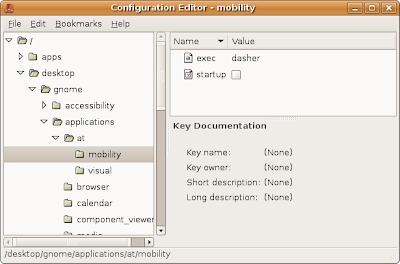When in Unix you should really do as Unixans do. They store application configuration to the /etc folder and user preferences to user's home folder using dot (.) for first name of file.
So if your application is called maestro then it should store its' configuration to /etc/maestro.conf (or /etc/maestro/config.xml or /etc/maestro/app.ini - it doesn't matter as long as it is in the /etc). And it should store its' user preferences to ~/.maestro file (or to ~/.maestro/.profile.txt - as long as it is in users' folder, starts with a dot and the filename hints about its origin).
Even Gnomes' GConf (you may run it from cmd line using gconf-editor) follows this convention by creating a ~/.gconf file in your home folder.

Your application should also be configurable via environment variables and command line parameters. But what if a collision of settings occur? Then you should use following priorities - low) read config file, mid) check the environment variables, high) check command line parameters.
Configuration source with highest priority should prevail. For example - if an option is defined in config file and is also passed as a command line parameter the one passed at the command line should be used.
Easiest way to implement all this is to try to read each settings from config file, then from environment vars and then from cmd line overwriting it each time a new value is available. This way the last read setting will prevail. There are multiple libraries available to assist you with reading config files and parsing command line parameters. Though options are many for C++ I recommend using Boost.Program_options. It will provide the user of your command line tool with experience he is familiar with including command line script files. I explained my preference for the Boost library here.
1. Casing conventions
These are compatible with pgAdmin generated code so I recommend you stick to them.
2. Identing rules
2.1. Set tab size to 8 (spaces).
2.2. Make it possible to comment out (using --) delimiters and operators (such as comma, AND, OR, JOIN, etc.) by putting them at the beginning of a row.
2.3. When dividing statements to multiple rows ident them to emphasize individual statements' hierarchy. 
2.4. Feel free to put entire SQL statement into single row if it will fit.
3. Academic sample from the internet
4. Real life sample (fragment!)